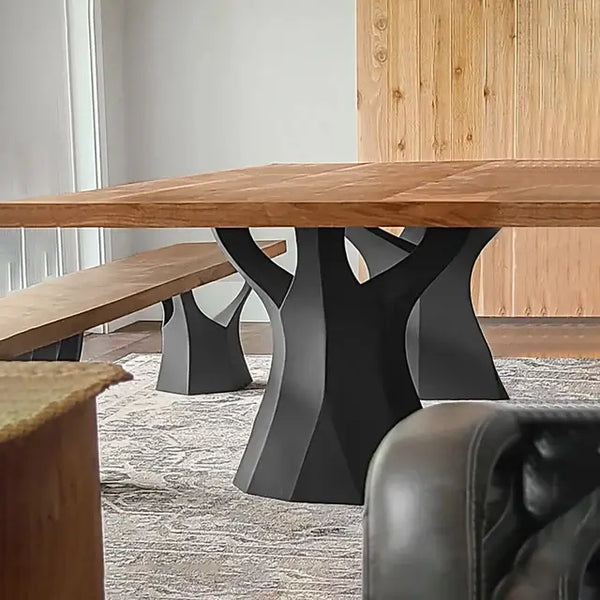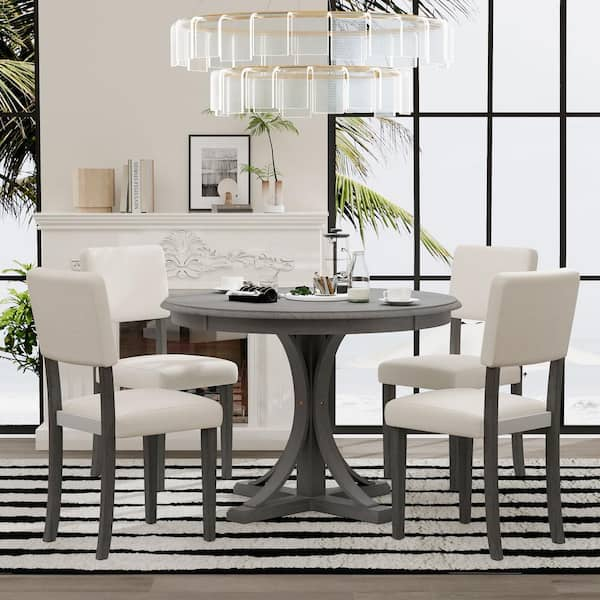The Top Trends in Dining Room Table Legs You Need to Know
The Top Trends in Dining Room Table Legs You Need to Know
Blog Article
Professional Tips for Setting Up Eating Area Table Legs for Maximum Security
When it comes to setting up eating space table legs, attaining maximum stability is paramount for both performance and visual appeals. What particular strategies can boost stability even better?
Select the Right Legs
When selecting the proper legs for your eating room table, it is important to take into consideration both functionality and visual appeals. The legs you pick will dramatically affect the overall style and security of the table. First, assess the table's planned use; if you expect regular events, stronger legs, such as those made from solid timber or metal, might be better, as they use raised sturdiness and assistance.
Conventional eating tables generally vary from 28 to 30 inches in height, so ensure the legs line up with this criterion for convenience. Tapered legs can include a contemporary touch, while turned legs could communicate a much more classic visual.

Select Appropriate Hardware
Just how can the best hardware boost the stability and longevity of your dining space table? The selection of appropriate equipment is important to making sure that the legs of your table are firmly connected and able to stand up to normal usage. High-quality screws, bolts, and braces offer the necessary stamina to sustain the weight of the table, in addition to any kind of extra loads placed upon it throughout celebrations or meals.
When picking screws, choose those made from long lasting products such as stainless-steel or brass, which stand up to corrosion and maintain integrity with time. The length of the screws is just as essential; they ought to permeate deeply into the table's framework without endangering stability. For bolted connections, take into consideration using lock washing machines to protect against loosening due to resonance or movement.
In addition, making use of edge brackets can add additional support, specifically for bigger tables or those with much heavier tops. These braces disperse weight equally and aid maintain the table's form. Ensuring that the hardware you choose is ideal for the certain materials of your table will further boost its general stability and long life, permitting you to enjoy your eating experience for years to come.
Ensure Proper Positioning
Correct positioning of dining space table legs is crucial for both visual charm and functional stability. To attain optimal alignment, begin by gauging the range from the table's edges to the leg attachment points.
Use a level throughout installment to validate that each leg is perpendicular to the table top. It is suggested to note the wanted leg positions on the bottom of the table with a pencil or concealing tape prior to safeguarding them.
Furthermore, verify the positioning after the first screws are tightened up, as adjustments might be needed prior to fully securing the hardware. By focusing on correct positioning, you not only boost the table's overall style however additionally make sure that it remains secure and useful for several years to find.

Consider Weight Circulation
After ensuring proper positioning of the dining room table legs, it is necessary to think about weight distribution to boost security and capability. dining room table legs. Correct weight distribution is critical in preventing tottering and making certain that the table can support its designated lots without risk of tipping or collapsing
When positioning the legs, ensure they are put at equivalent distances from the center of the table to uniformly disperse the weight across the framework. Take into consideration the weight of the tabletop and any products that will often hinge on it, such as tabletop appliances or attractive items. Tables with much heavier surface areas should preferably have legs located closer to the edges, as this makes best use of the base of assistance and lessens the threat of instability.
Furthermore, if the table is meant for use in a high-traffic area, consider making use of heavier products for click here now the legs or including supporting elements, such as cross-bracing or a reduced rack - dining room table legs. These adjustments can assist keep balance and stop moving throughout use. Ultimately, a well-considered weight distribution strategy will considerably improve the table's total performance, ensuring it remains a eye-catching and useful focal point for your eating room
Examination Stability Before Usage
Examining the security of the eating space table prior to usage is a critical action that should not be ignored. Guaranteeing that the table is secure and safe and secure can protect against mishaps and extend the lifespan of the furnishings. Begin by using gentle pressure to different points on the table surface area. Push down on the center and afterwards along the edges, shifting or observing any wobbling. Recognize the legs or joints that may require modification. if the table shows instability. Continue
Next, inspect that all screws and fasteners are tightened correctly. Loose connections can lead to instability and see it here possible damages over time. If necessary, use timber adhesive on joints to boost stability, guaranteeing to permit adequate drying time.

Final Thought
Finally, the setup of dining-room table legs needs cautious consideration of materials, placement, equipment, and weight distribution to attain optimum security. By choosing top notch fasteners and sturdy legs, ensuring exact placement, and dispersing weight uniformly, the structural integrity of the table can be significantly boosted. Performing a security test before routine usage better ensures that the table will certainly stand up to daily stress, thereby supplying a safe and trustworthy dining experience.
When it comes to setting up eating space table legs, accomplishing maximum security is paramount for both capability and appearances. The legs you pick will significantly influence the total layout and security of the table (dining room table legs). Typical dining tables usually range from 28 to 30 inches in height, so make certain the legs align with this requirement for comfort.Correct placement of dining space table legs is essential for both visual appeal and useful stability.In conclusion, the installation of dining area table legs calls for mindful consideration of materials, placement, hardware, and weight circulation to attain optimum security
Report this page